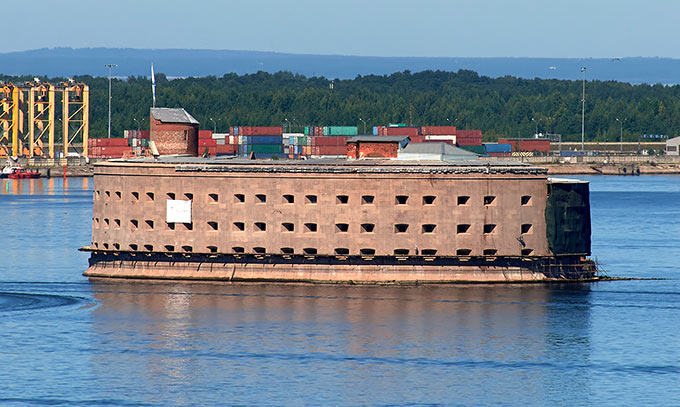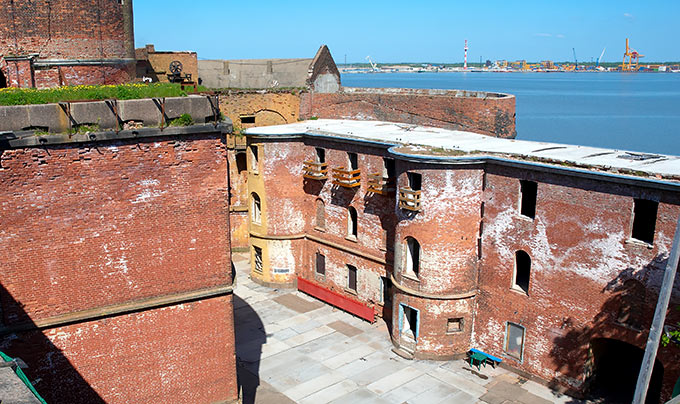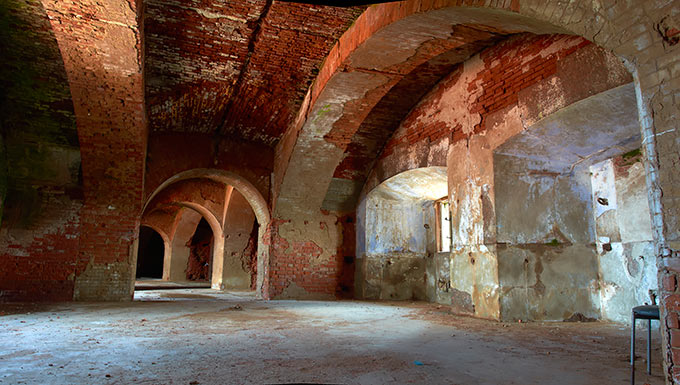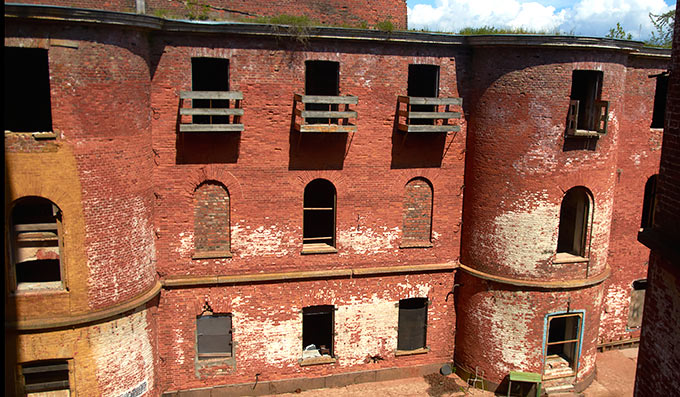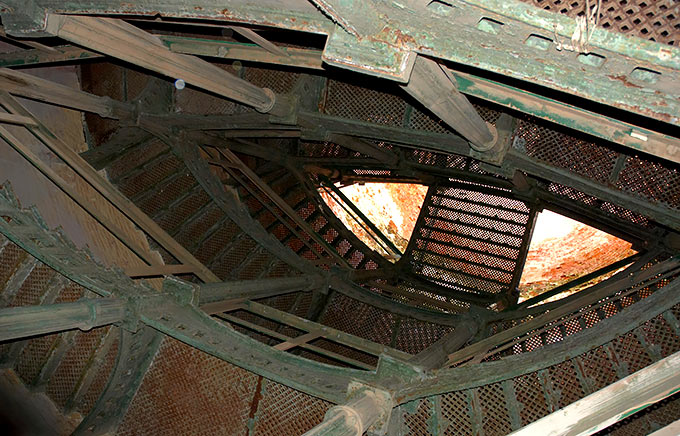Fort Alexander I (Plague Fort)
The fort was constructed in 1838-45 under the project of engineer-colonel Carbonjer and Moris Dastrem on an artificial island in Finnish Gulf close to Kronshtadt. It had a task to cover the south water-way to S-Petersburg by cross-fire with forts Peter I, Risbank and Kronshlot together.
The fort has size 90x60 meters and "bean" shape. It has 4 fighting levels with 103 cannon ports (loopholes) and also 34 guns might be adjusted on the roof, so the fort can provide an all-round defense.
The fort was put into commission July 27, 1845. Emperor Nikolai I made a visit to the fort on this day for approving construction works.
This fort never participated in war actions, however it has made a big impression to commander of allied fleet admiral Nepir during the Crimean war.
In 1860th, the fort has lost its military value with development and spreading of the rifle artillery, instead of smooth-bore. It was used as a warehouse of mines and ammunition and was expelled from the military register of fortresses in 1896.
In 1894 the pathogenic organism of plague was open by scientist A.Jersen. In this year, the Special Commission for prevention of plague and struggle against it (KOMOCHUM) was established in Russia. Prince Oldenburgsky has been appointed its chairman.
The fort Alexander was an ideal place for location of plague laboratory - it was isolated completely (and it is isolated yet) and was disposed not far from S-Petersburg. On January 26, 1897 the fort was handed to Institute of Experimental Medicine for organization of the plague laboratory. Veterinary doctor M.G.Tartakovsky was it's first director.
There was the infectious diseases section with scientific research laboratory, experimental menagerie and stables for 16 horses. The laboratory produced anti plague serum of horse's blood. Outside the infectious section were rooms for dwelling of physicians and their families, rest and visitor's reception rooms, and a hall for scientific conferences. An admission to the fort was strictly limited. Only the little steamship called "Microbe" linked the fort with mainland.
The work in laboratory was extremely dangerous business. Despite the strict protective measures, there were two outbreaks of epidemic of plague with human victims - in 1904 and 1907. Director of laboratory D-r V.I.Turchaninov-Vyzhnikevich was one of the victims of that outbreaks. Bodies were burnt right in there in cremation furnaces of the fort.
In 1917 the laboratory was closed, its equipment were removed. The fort was fallen into military’s hands again. There were various warehouses and naval guardhouse.
Now the fort is abandoned and deserted. All iron things - the armored-doors, bars, mechanisms, guns and even stair's banisters has been pulled out and send to metal-working plants in 1960-70th. There are no traces of repair or conservation works. It is known that the fort is leased for so called open-air (music, dancing, beer, girls - for all night) by local authorities at the cost 1000$ per night.
Impressions
Fort Alexander is the most impressive fortification that I ever saw. Combination of its mighty and powerful exterior with desolation and decoy inside is the better expression of my feeling of the whole of this country.
It was constructed on an impossible place with incredible efforts and hardship, in defiance of severe northern nature, for the keeping in awe of numerous foes. And now it stands empty, terrible, gloomy and absolutely needless in the midst of the cold sea. Even rats do not want to live there.
Land forts and fortress:
Bip Castle Gatchina Ivangorod Izborsk Kexholm Kirillov Monastery Koporye Novgorod Pechorskiy Monastery Peter&Paul Fortress Porkhov Pskov Schlisselburg Staraya Ladoga Tikhvin Vyborg Hameenlinna Hamina Kastelholm Kymenlinna Lappaenranta Raseborg Castle Savonlinna Tavetti Turku Visby Fredrikstadt Fredriksten Hegra Fort Hoytorp Fort Arensburg Narva Tallinn Antipatris Caesarea Jerusalem Latrun Fort Masada
Sea forts and fortresses:
Alexander Fort Ino Fort Krasnaya Gorka Fort Kronstadt: Kotlin isl. Kronstadt: North Forts Kronstadt: South Forts Trongsund Hanko Svartholm Sveaborg Marstrand Siaro Fort Vaxholm Oscarsborg
Artillery batteries and individual guns:
Coastal Artillery Hemso Fort
Fortified areas and defensive lines:
Karelian Fortified Area (KaUR) KrUR Leningrad Mannerheim Line Nevsky Bridgehead VT Line Harparskog Line Salpa Line Gothland
Russian
S e a r c h All news

